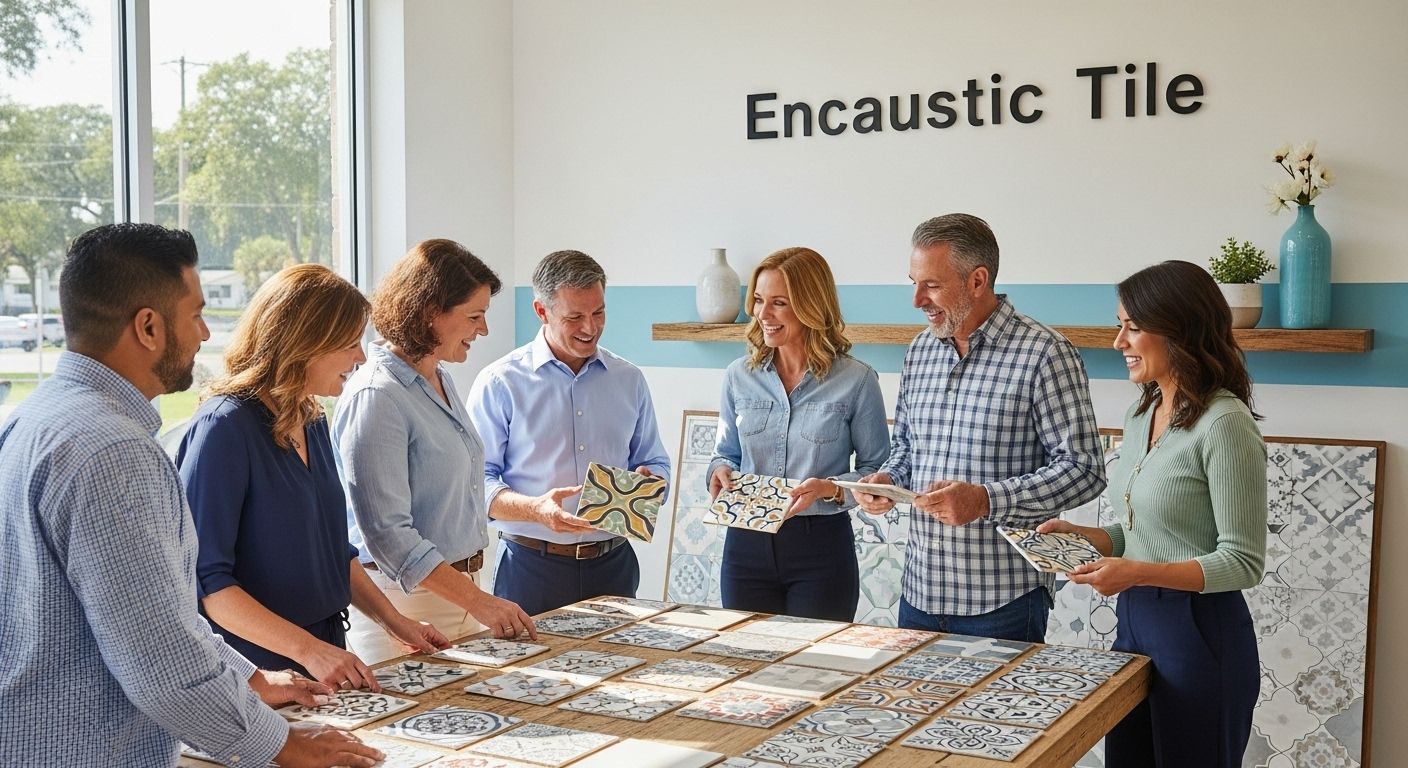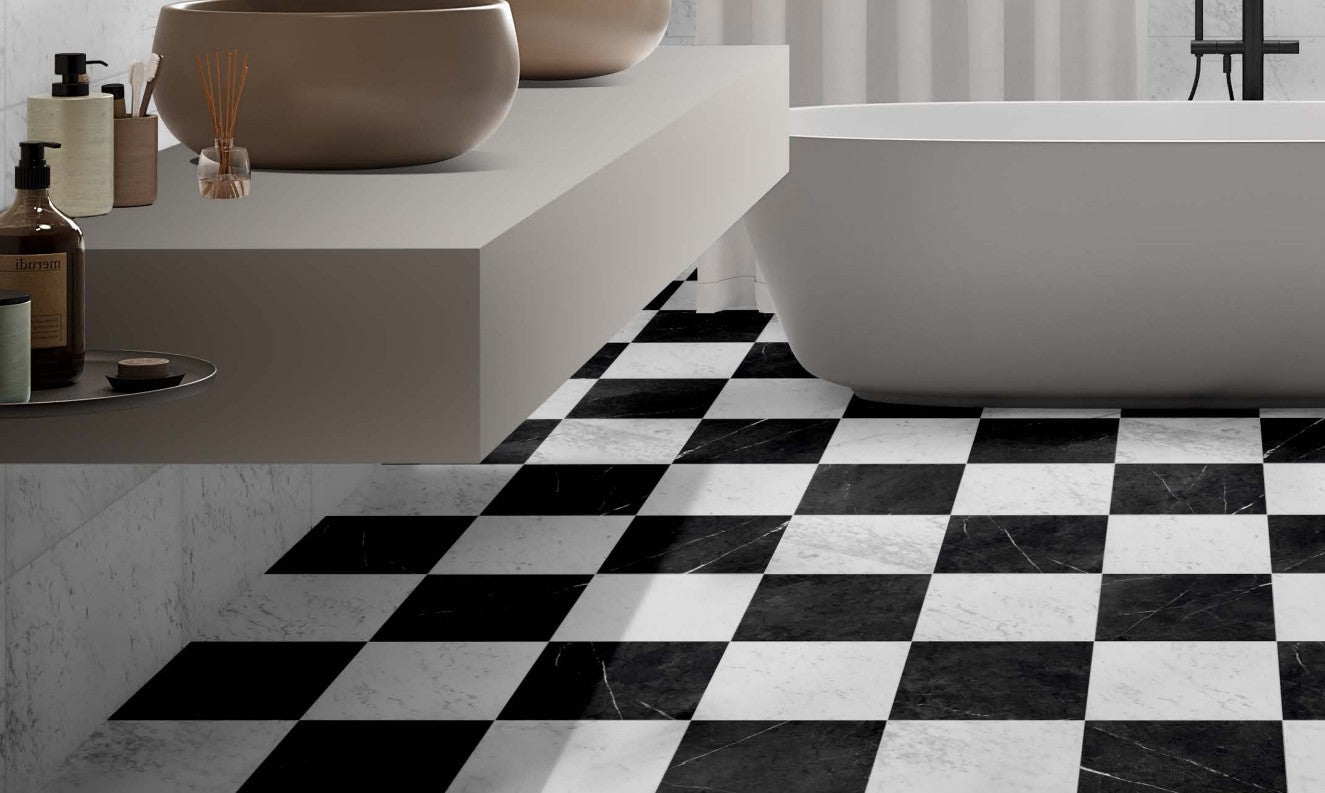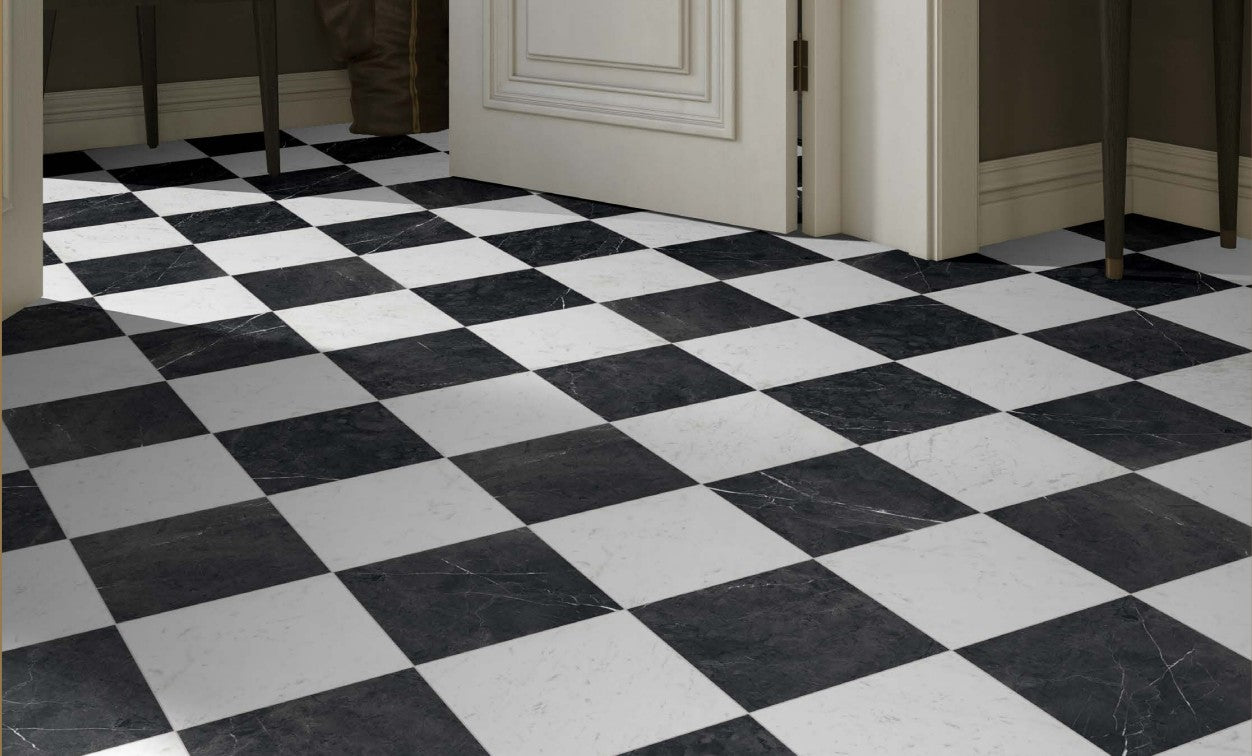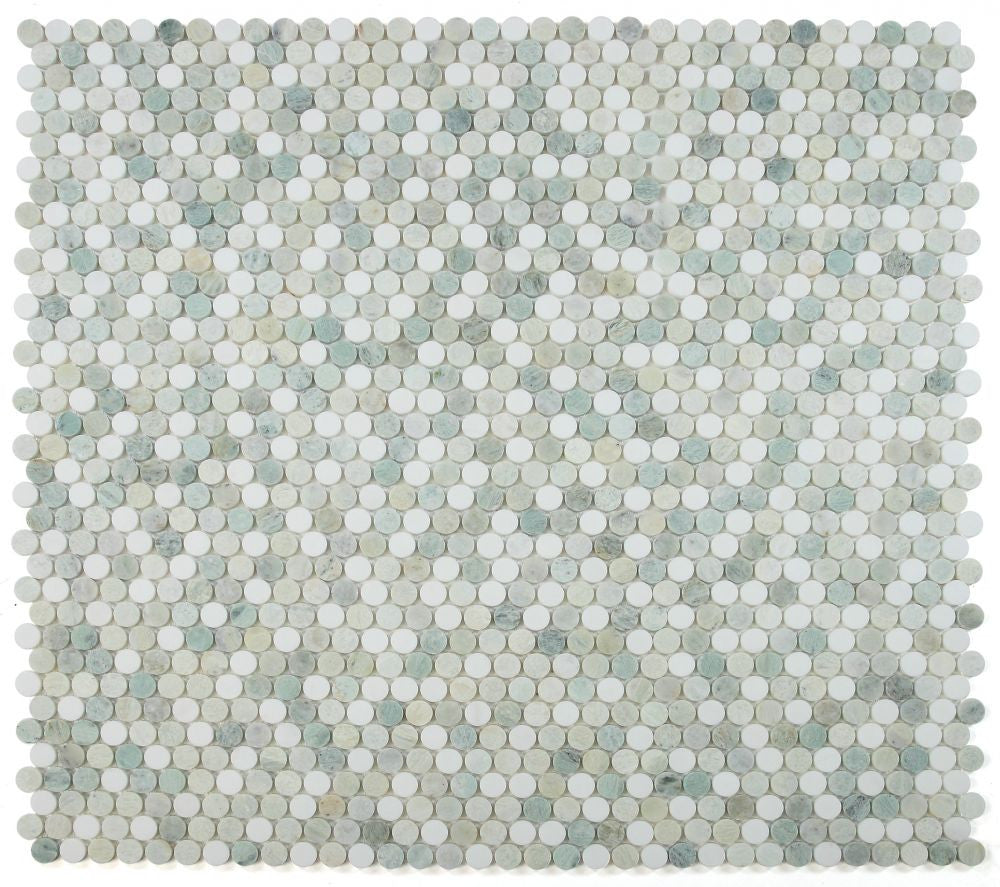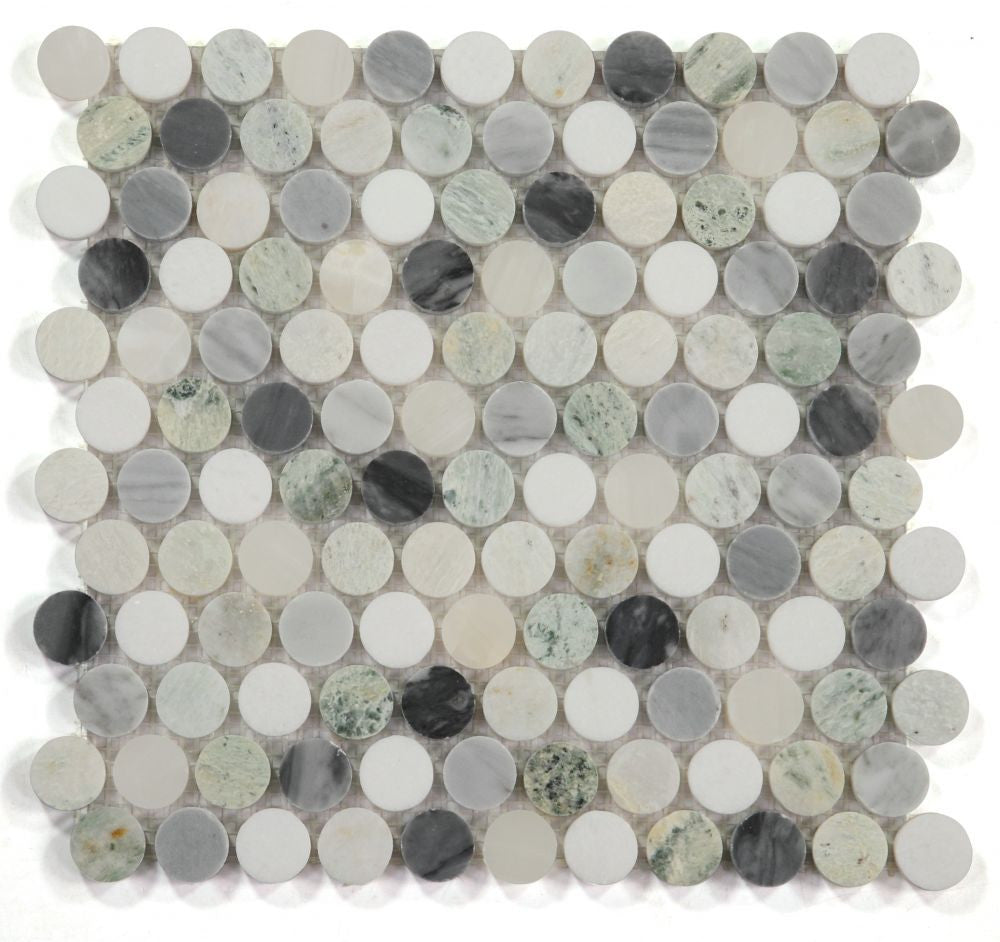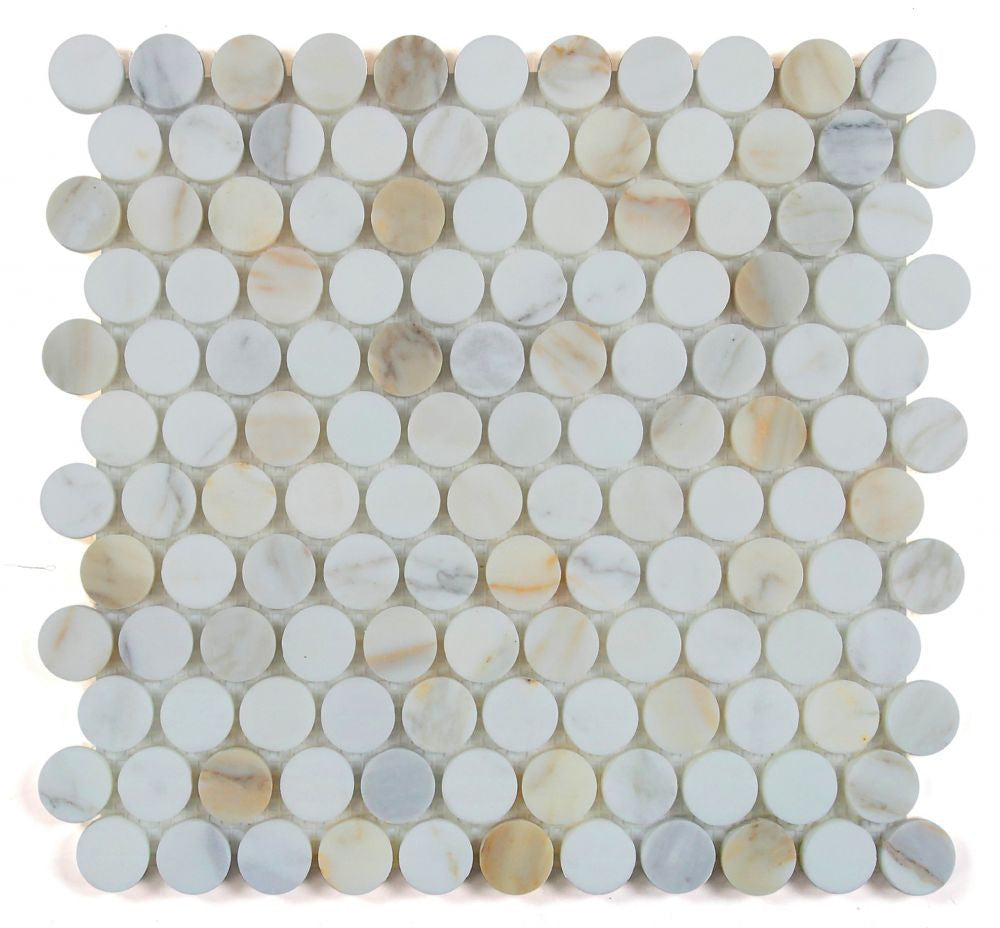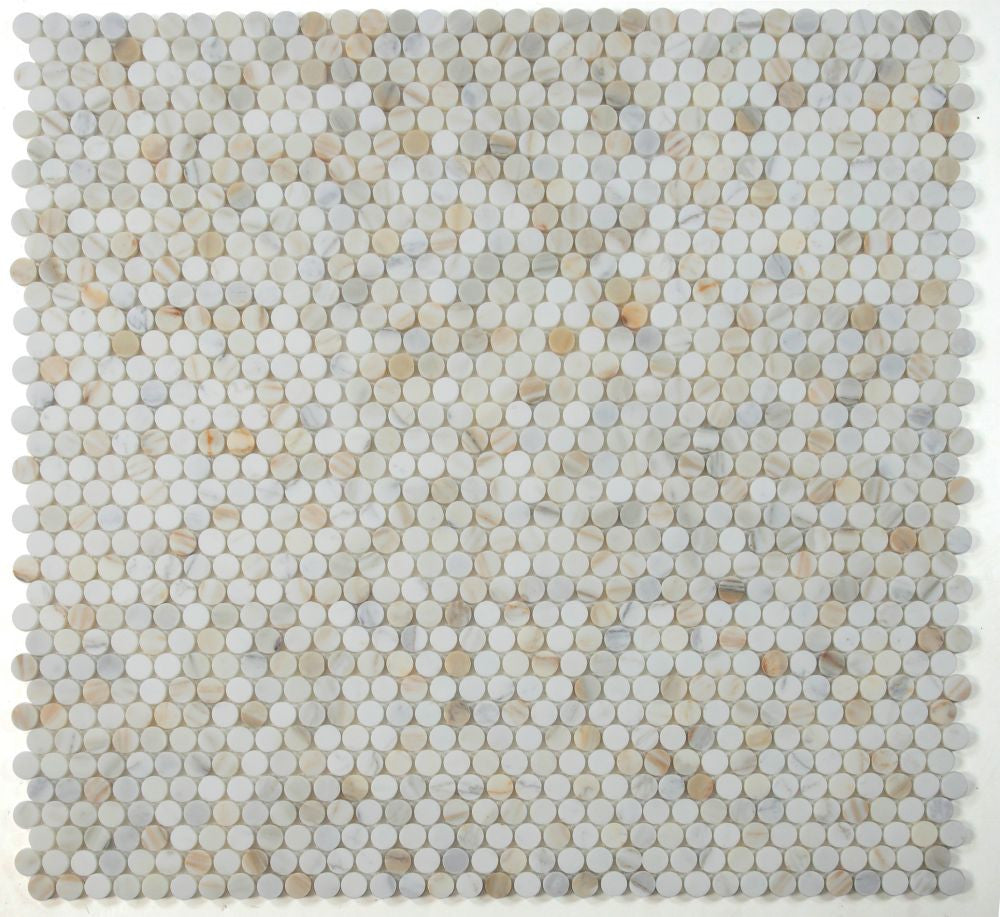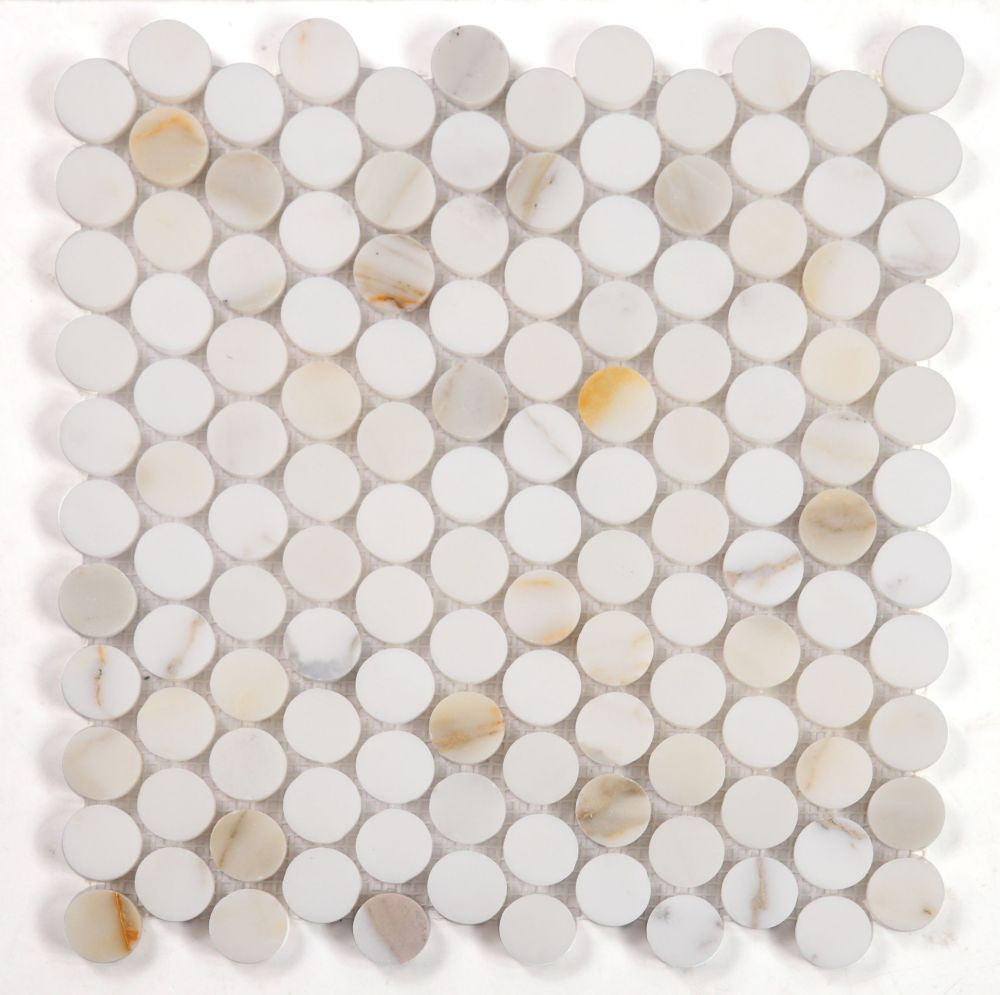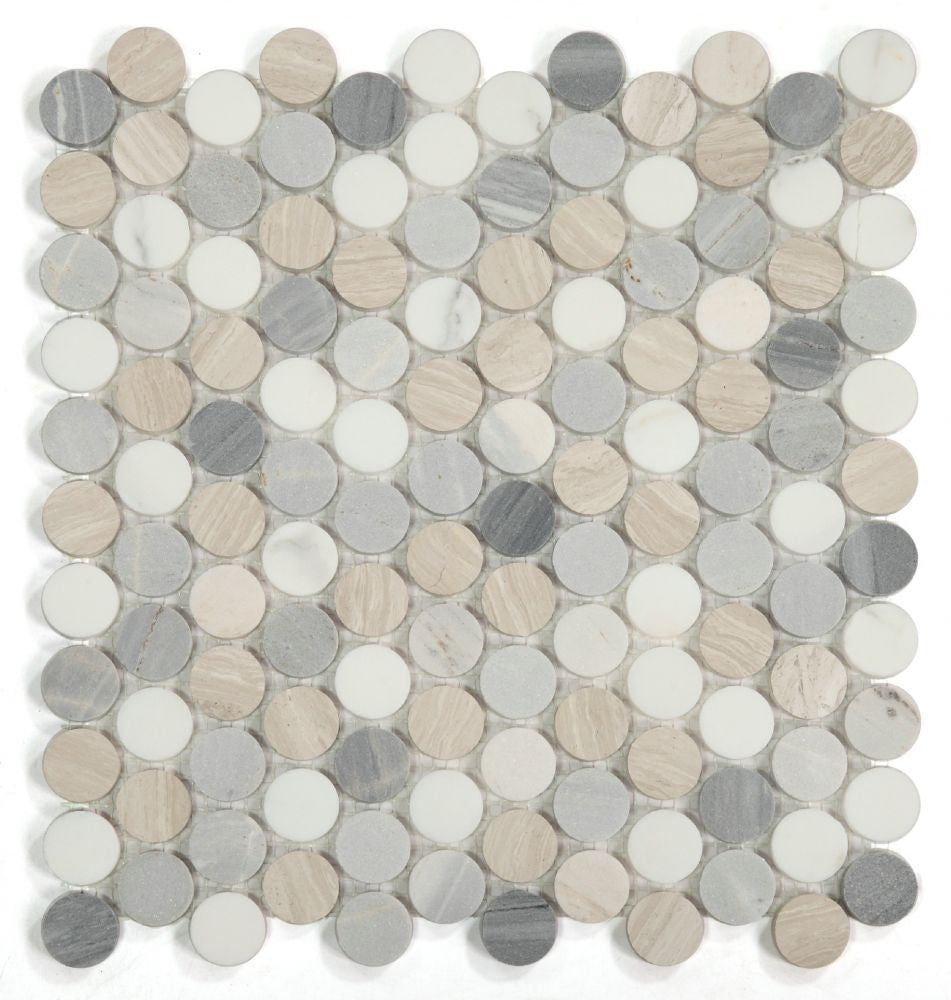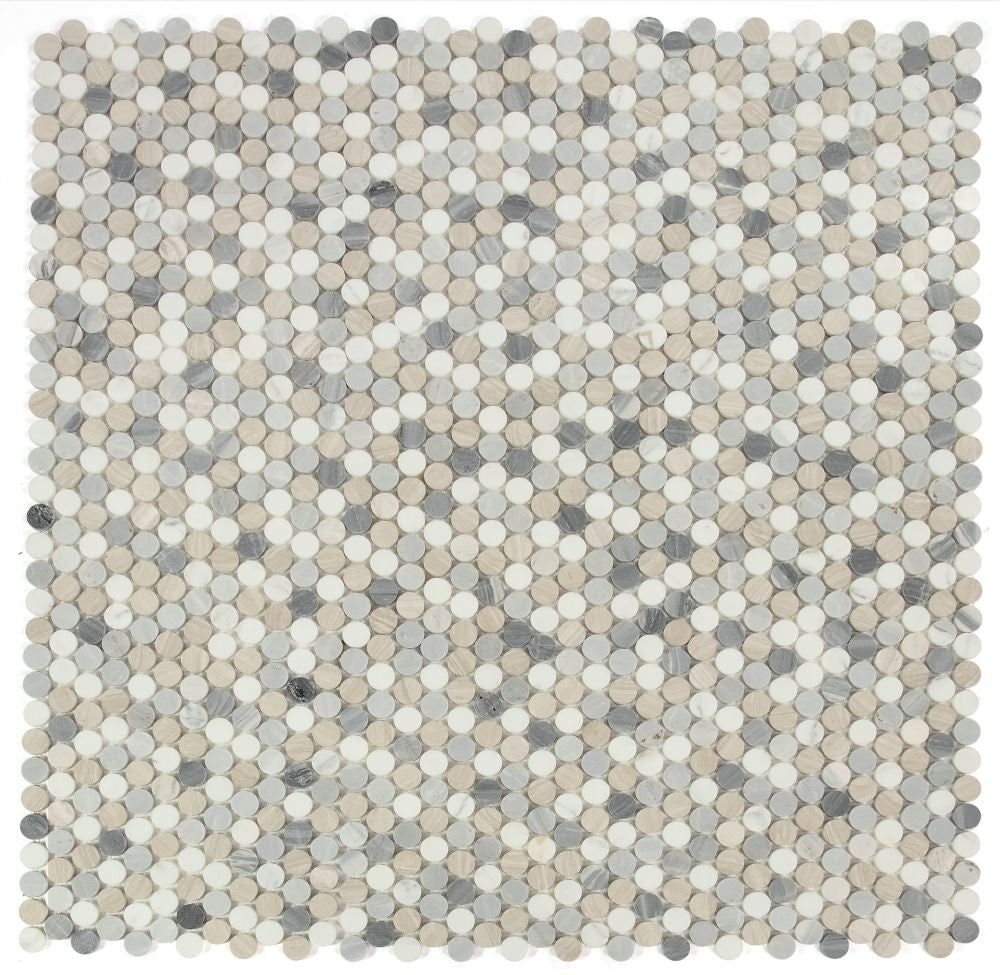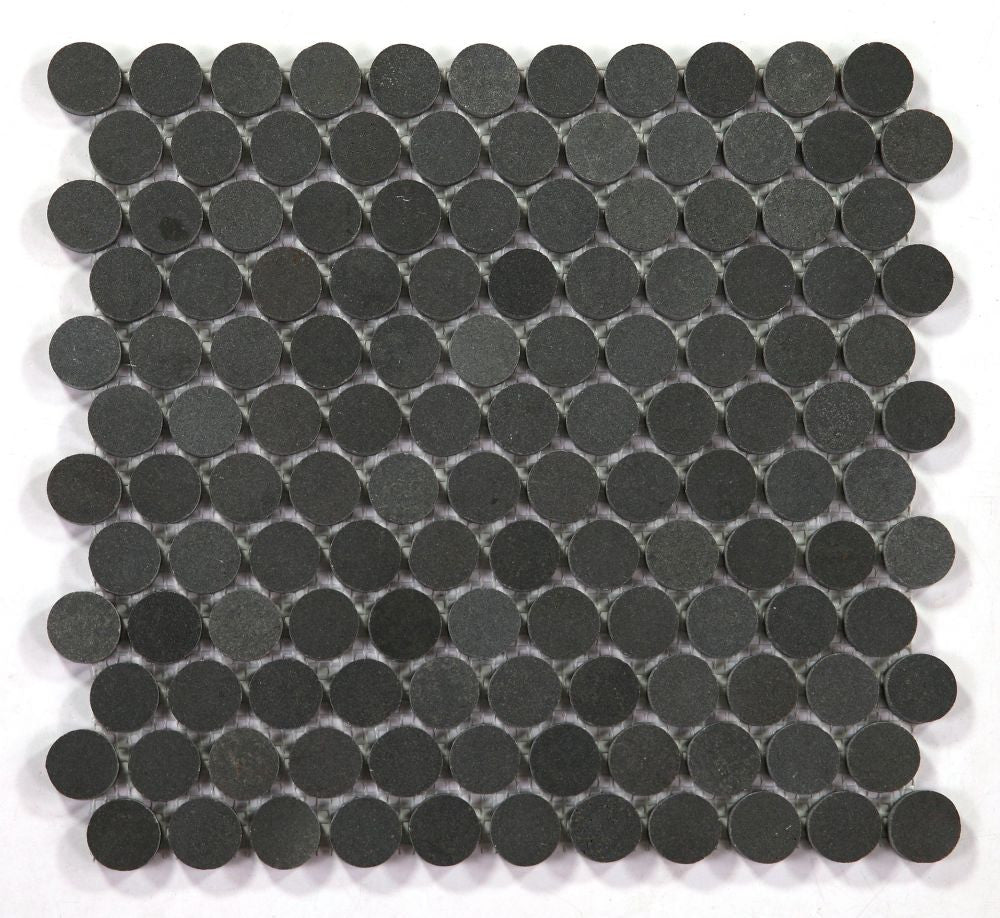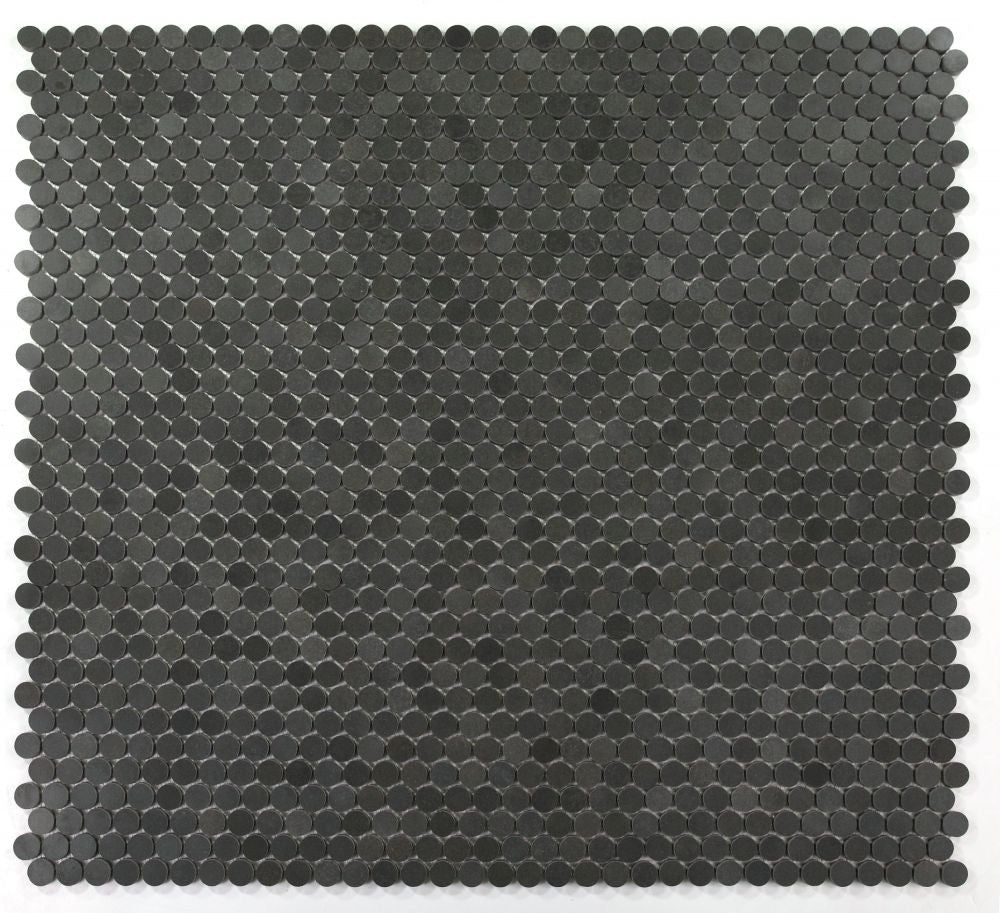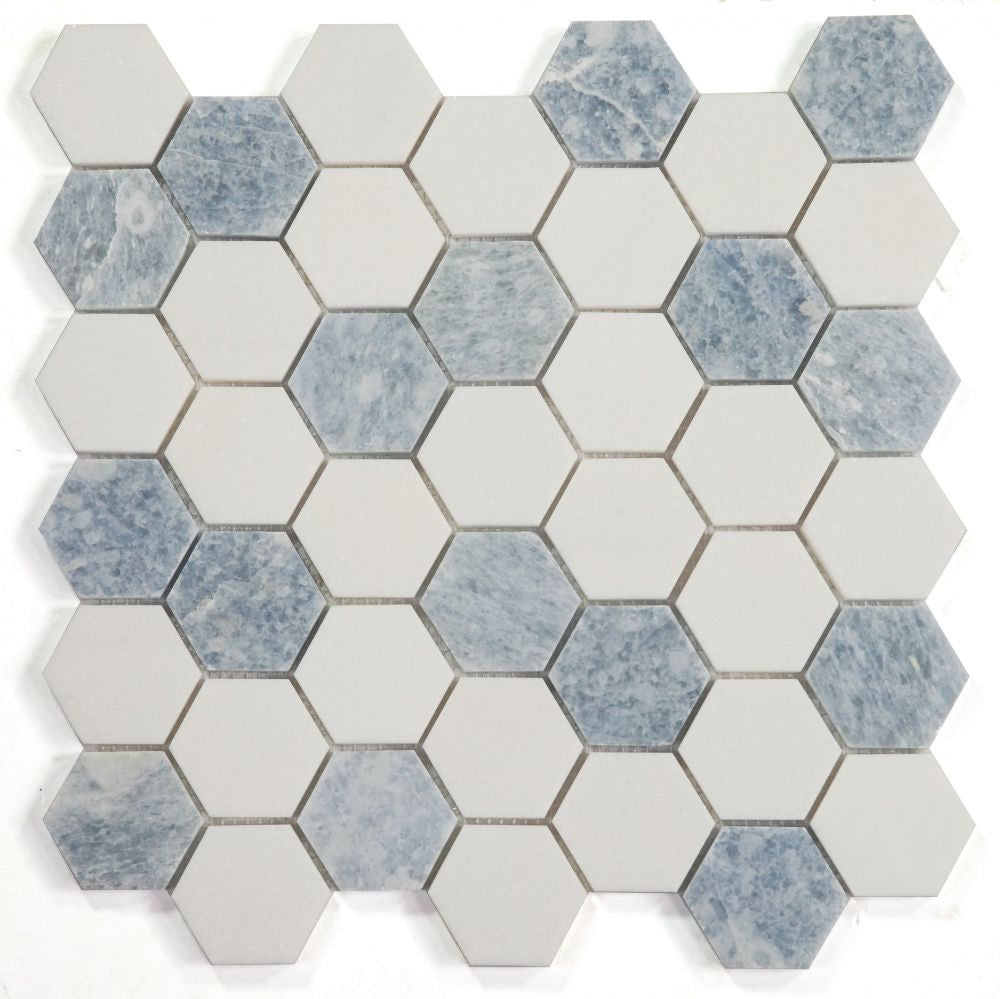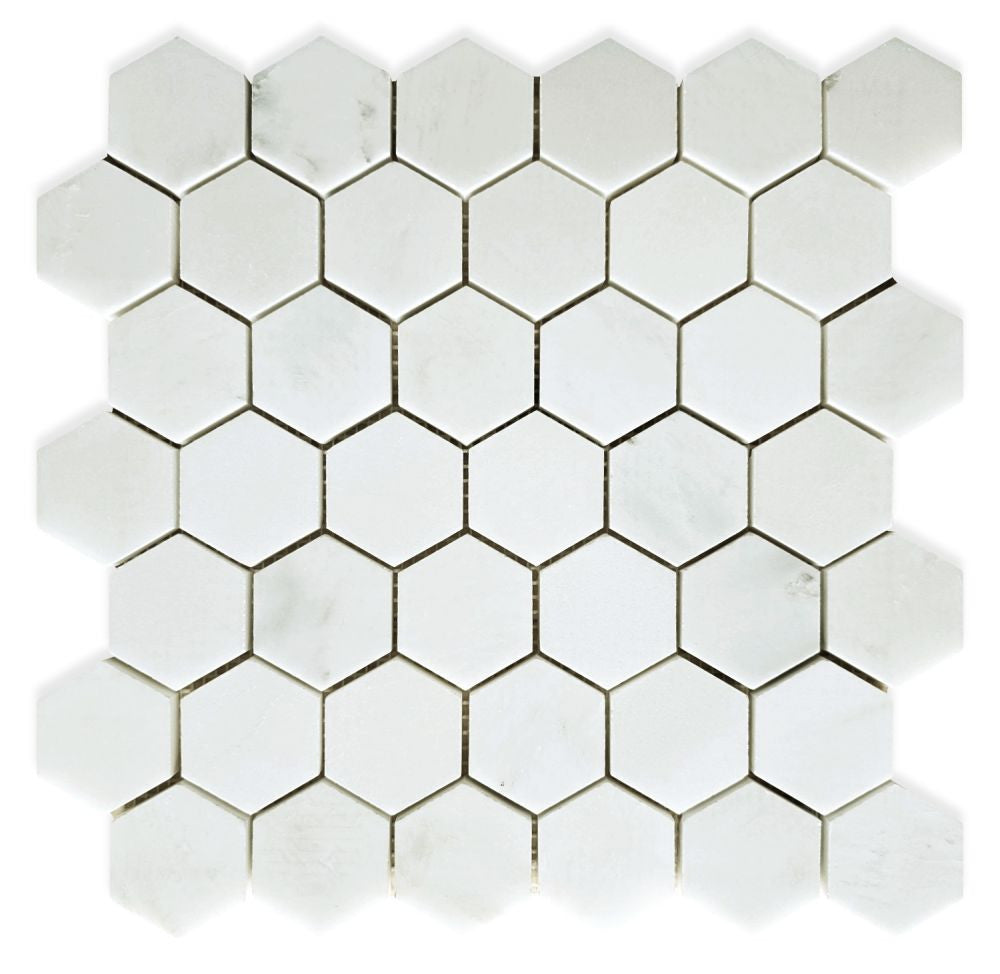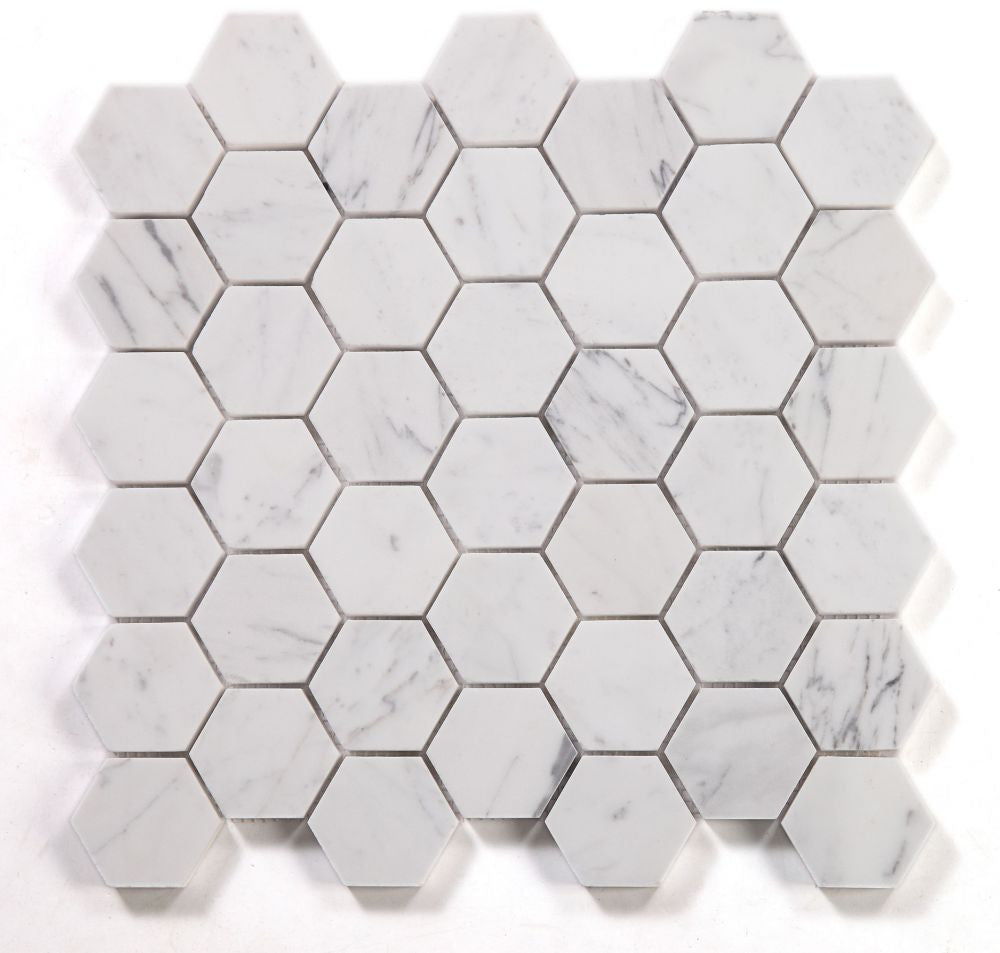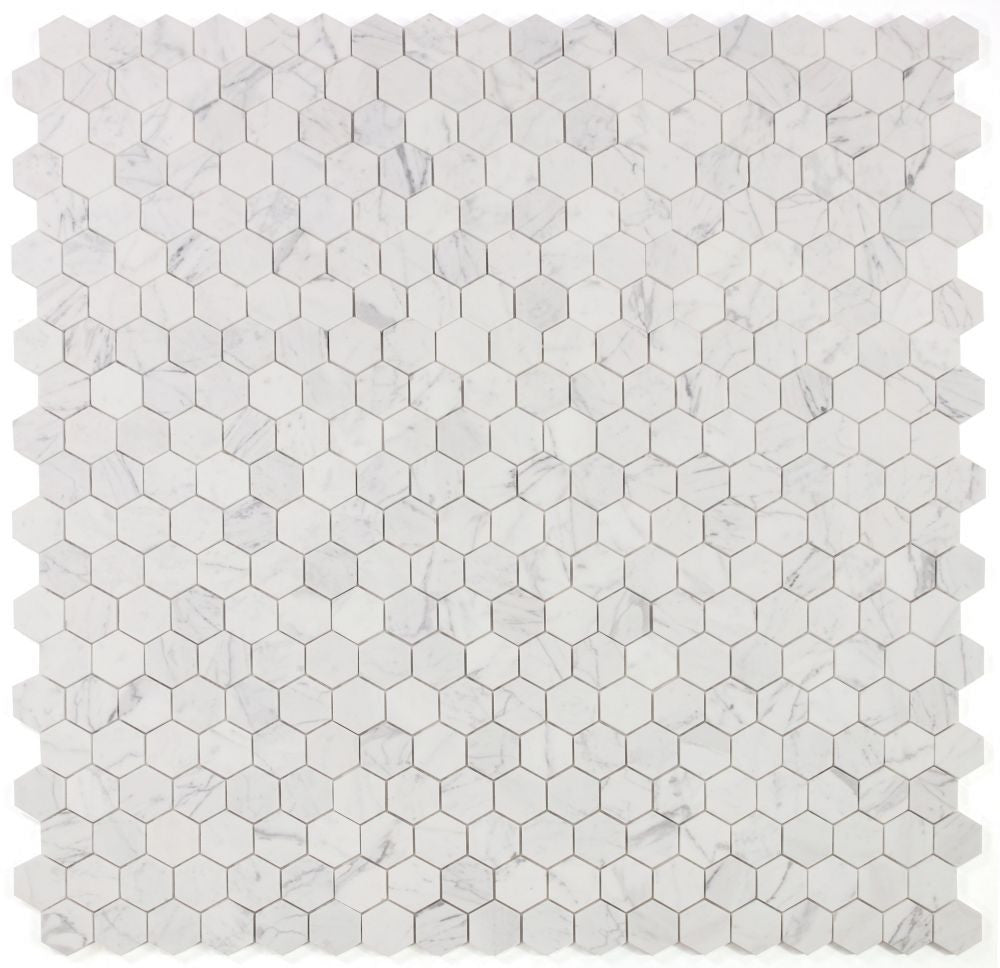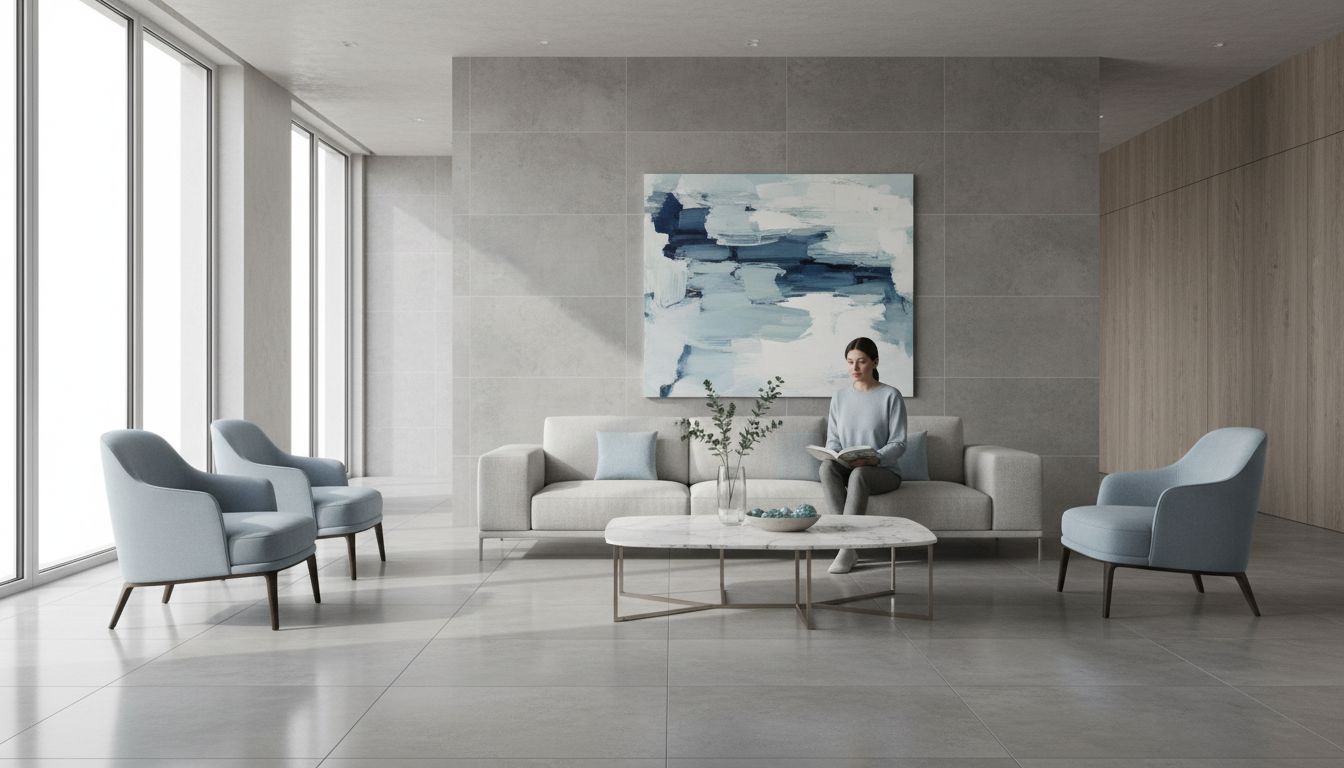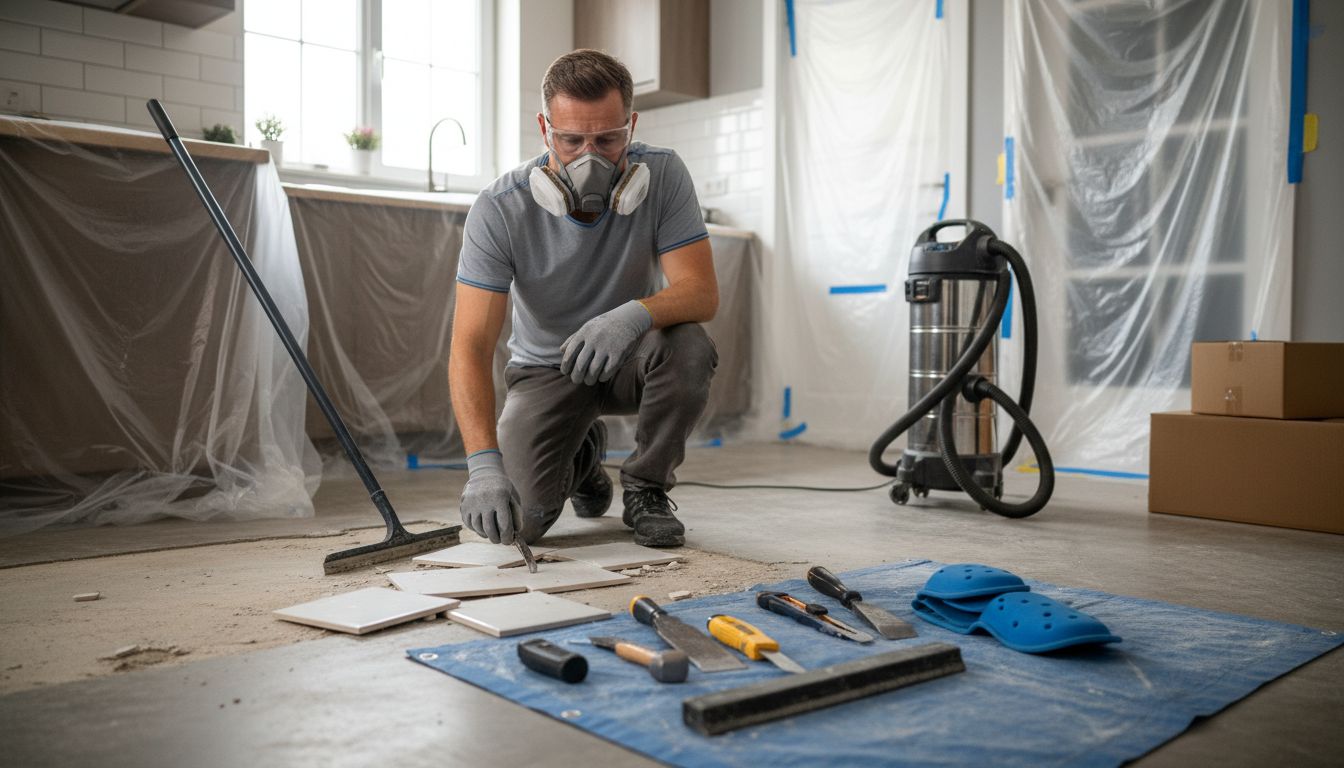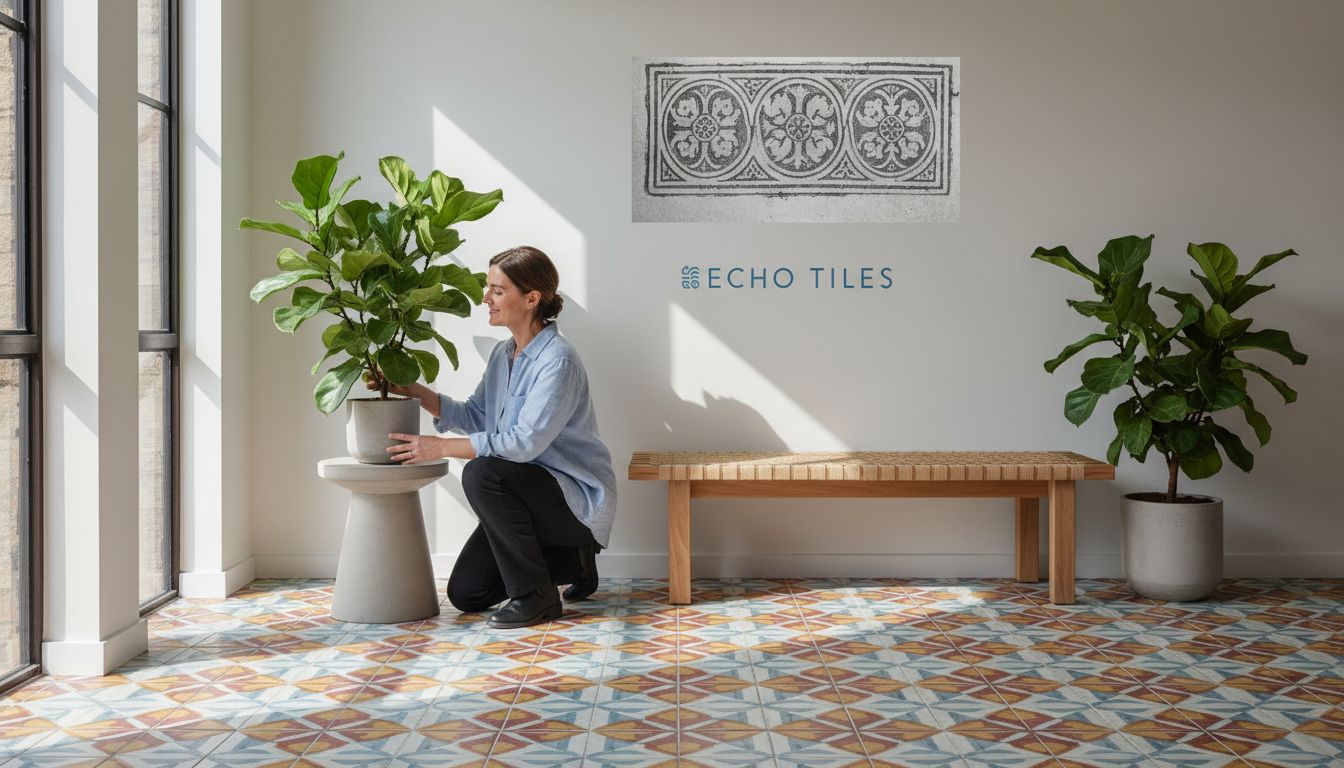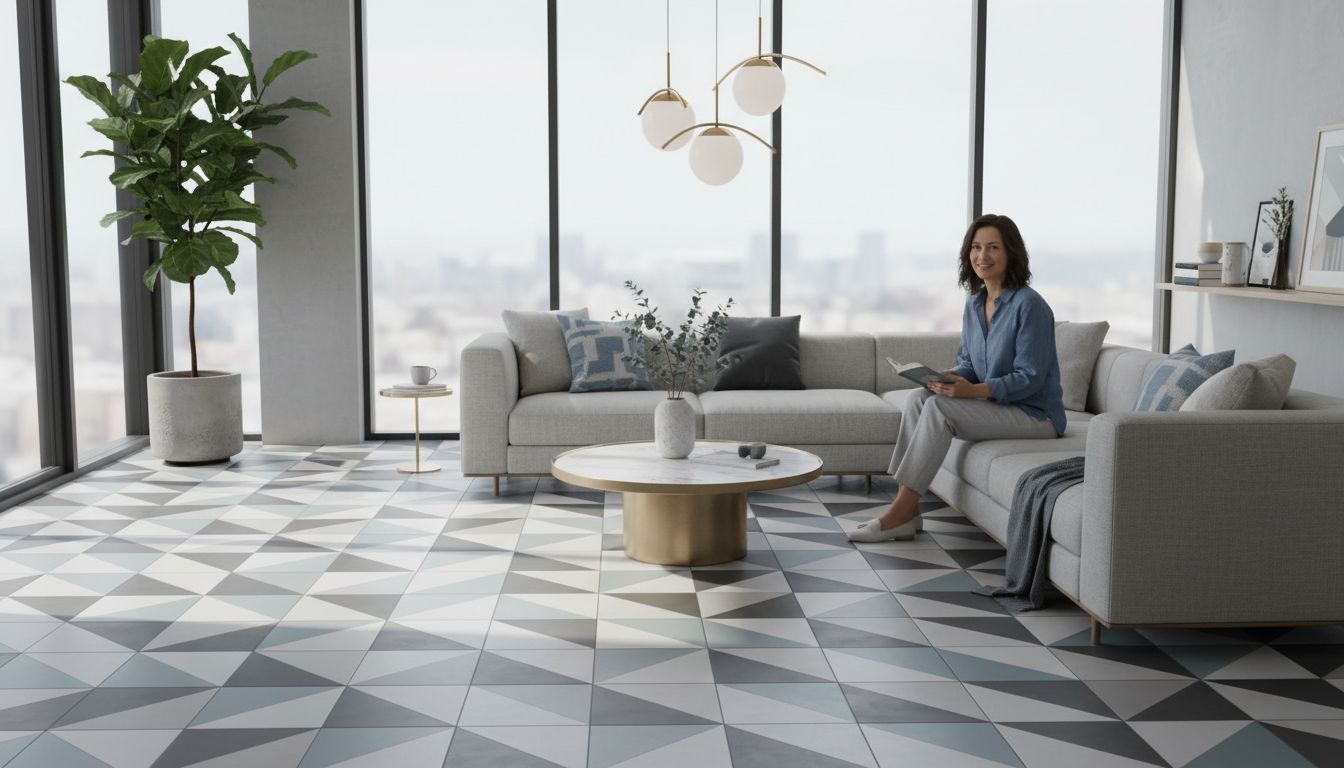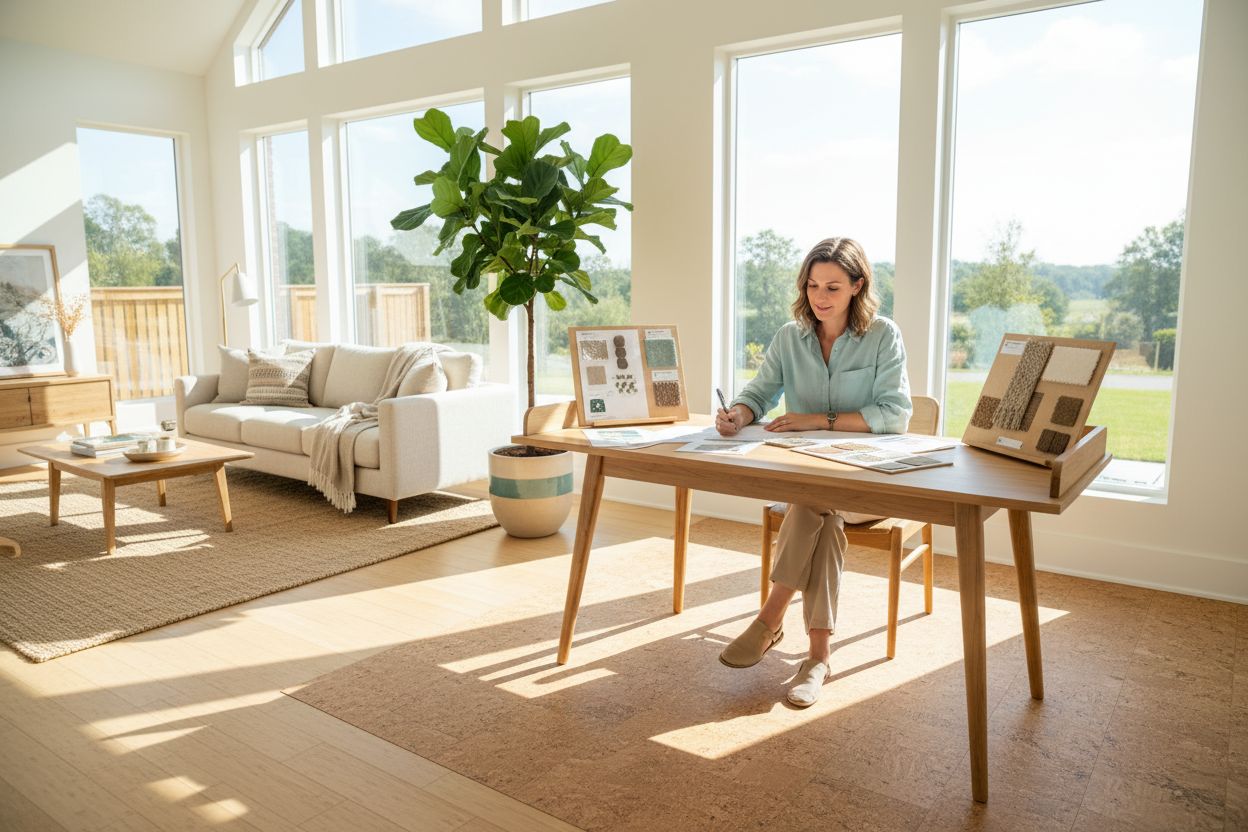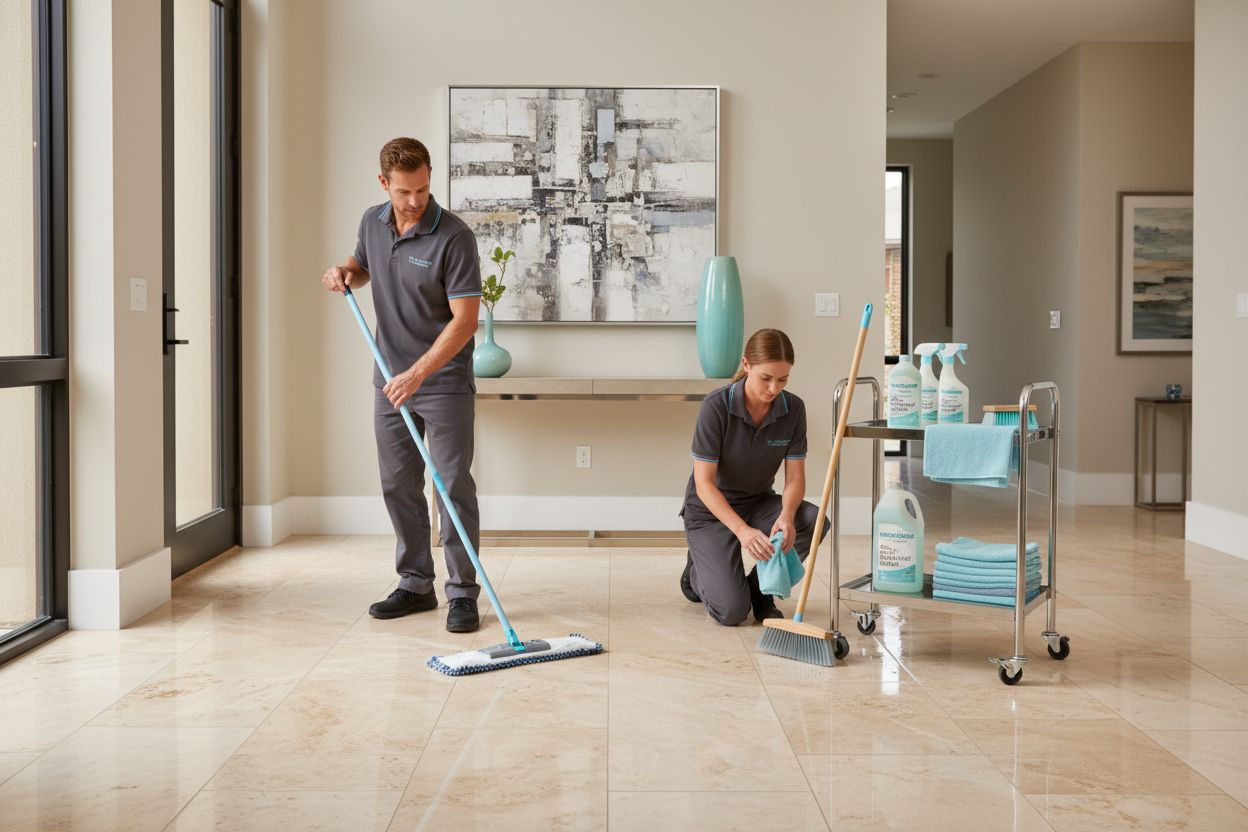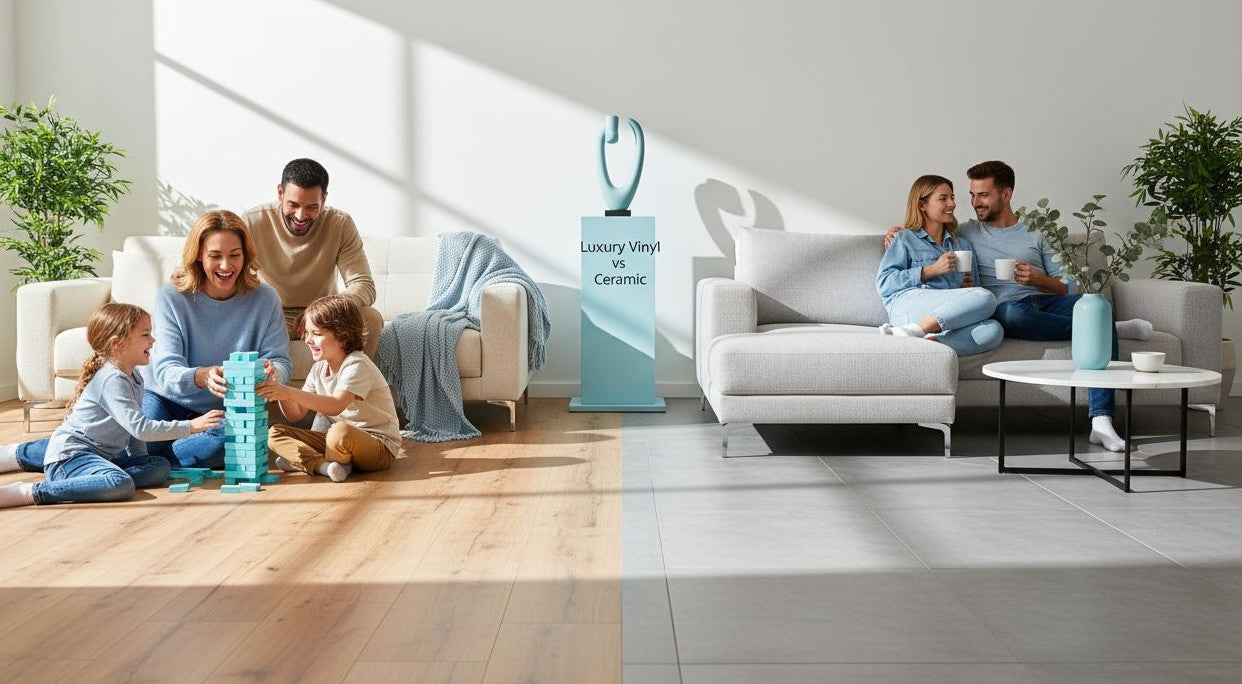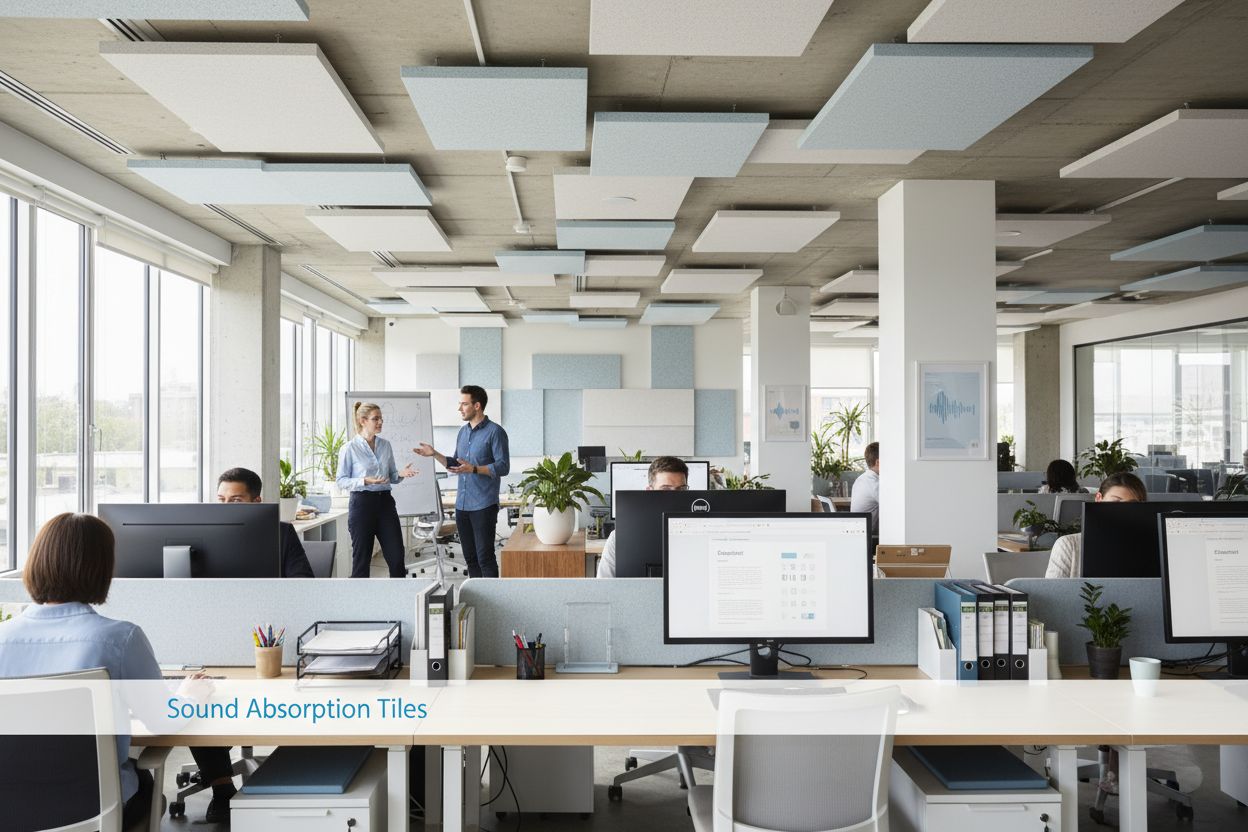Encaustic tiles carry centuries of design history, blending artistry and practicality right under your feet. Think tiles are just about color? Get this. The pattern in authentic encaustic tile goes all the way through the tile, so the design stays crisp even after decades of wear. Most floors fade with time. These only get more interesting. Wait till you see why renovators and designers keep chasing these centuries-old tiles for modern projects.
Table of Contents
- Understanding Encaustic Tile: Definition And History
- How Encaustic Tiles Are Made And Materials Used
- Popular Uses And Design Ideas For Encaustic Tiles
- Care, Maintenance, And Installation Tips
Quick Summary
| Takeaway | Explanation |
|---|---|
| Encaustic tiles are historically significant. | They originated in 12th-century European monasteries, symbolizing craftsmanship and social status. |
| Proper installation is crucial. | Encaustic tiles require specialized handling and a clean, level substrate to avoid damage over time. |
| Tailored cleaning and sealing are essential. | Use pH-neutral cleaners and sealers to protect the tiles from stains and moisture damage. |
| Versatile design applications exist. | Encaustic tiles enhance both interior and exterior spaces, offering unique artistic statements in various designs. |
| Ongoing maintenance prolongs tile lifespan. | Regular care, including protective mats and prompt spill cleanup, keeps encaustic tiles looking beautiful for years. |
Understanding Encaustic Tile: Definition and History
Encaustic tile represents a stunning and historic form of decorative flooring that combines artistry, craftsmanship, and remarkable durability. These unique tiles are characterized by intricate patterns and designs created through a specialized manufacturing process that embeds colored clay or cement directly into the tile’s body, ensuring the design remains vibrant and intact even after decades of use.
The Origins and Cultural Significance
The term “encaustic” originates from the ancient Greek word “enkaiein,” which means to burn in, reflecting the tile’s original production technique. While modern encaustic tiles differ from their historical counterparts, they maintain a connection to centuries of artistic tradition. Historical evidence suggests these tiles first emerged in medieval European monasteries during the 12th century, where craftsmen developed sophisticated methods of creating intricate, multi-colored floor decorations.
European tile makers, particularly in regions like Spain, Portugal, and France, refined the encaustic tile technique during the Gothic and Renaissance periods. These decorative tiles were not merely functional floor coverings but also powerful statements of artistic expression and social status. Monasteries, churches, palaces, and wealthy estates would commission elaborate tile designs that told stories, represented heraldic symbols, or showcased complex geometric patterns.
Manufacturing Process and Distinctive Characteristics
Traditional encaustic tiles were handmade through a labor-intensive process involving multiple layers of colored clay or cement pressed together to create permanent, three-dimensional designs. Unlike printed or glazed tiles, the pattern in authentic encaustic tiles extends through the entire thickness of the material. This means the design remains crisp and recognizable even after extensive wear, making these tiles incredibly long-lasting and resistant to fading.
Modern encaustic tile production has evolved, incorporating advanced manufacturing techniques while preserving the core principles of the original craft. Contemporary tiles often blend traditional handcrafting methods with precision machinery, allowing for more consistent quality and broader design possibilities. Artisans and manufacturers now create encaustic tiles using cement, clay, or specialized composite materials, offering homeowners and designers an expansive range of colors, patterns, and styles.
Today, encaustic tiles represent more than just a flooring option. They are a testament to human creativity, showcasing how functional objects can simultaneously serve as artistic expressions. Whether installed in historic restoration projects, contemporary homes, or commercial spaces, these tiles bring a sense of timeless elegance and cultural richness to any environment. Their ability to transform ordinary spaces into extraordinary visual experiences continues to captivate designers, architects, and homeowners seeking unique and meaningful design solutions.
From medieval monasteries to modern interior design, encaustic tiles have maintained their allure by offering a perfect blend of durability, artistic complexity, and historical significance. As design trends evolve, these remarkable tiles remain a cherished choice for those who appreciate craftsmanship, storytelling through design, and the enduring beauty of meticulously created decorative surfaces.
How Encaustic Tiles Are Made and Materials Used
The creation of encaustic tiles is a complex and intricate process that transforms raw materials into stunning decorative surfaces through a combination of traditional craftsmanship and modern manufacturing techniques. Understanding the materials and production methods reveals the remarkable complexity behind these beautiful tile designs.

Core Materials and Composition
Encaustic tiles are primarily manufactured using three fundamental materials: cement, clay, and specialized composite mixtures. Cement-based encaustic tiles have become increasingly popular due to their durability, versatility, and ability to hold intricate designs. These tiles typically consist of a base layer of Portland cement combined with fine sand and pigments that are carefully mixed to create vibrant, long-lasting colors.
Clay-based encaustic tiles represent a more traditional approach, drawing from centuries-old manufacturing techniques. Artisan craftsmen meticulously prepare clay bodies by blending different colored clays and pressing them together to create multi-layered designs that extend through the entire tile thickness. Each clay tile becomes a unique piece of functional art, with color and pattern integrated directly into the material rather than applied as a surface decoration.
Here’s a summary table contrasting cement-based and clay-based encaustic tiles, helping you understand their core features and differences based on the materials and processes described above.
| Tile Type | Main Material Composition | Key Features | Typical Uses |
|---|---|---|---|
| Cement-Based Encaustic | Portland cement, fine sand, pigment | Durable, versatile, vibrant colors, popular in modern designs | Residential and commercial flooring, walls |
| Clay-Based Encaustic | Blended colored clays | Traditional, artisanal, color-through body, unique patterns | Restoration, historic projects, custom designs |
Manufacturing Techniques
The production of encaustic tiles involves several sophisticated techniques that ensure the highest quality and most intricate designs. In traditional methods, artisans would hand-press different colored clay or cement layers into carefully crafted molds, creating patterns that remain consistent throughout the tile’s entire depth. Modern manufacturers have enhanced this process by incorporating precision machinery that allows for more complex and repeatable designs while maintaining the essence of handcrafted quality.
Manufacturing begins with preparing the base material a precise mixture of cement or clay combined with pigments. Skilled workers carefully layer these colored materials into custom molds, applying significant pressure to ensure the design penetrates entirely through the tile. Some advanced techniques involve hydraulic presses that can create extremely detailed patterns with remarkable accuracy. The tiles are then allowed to cure and harden, a process that can take several days to ensure maximum strength and durability.
To help clarify the typical process used to make encaustic tiles, here’s a step-by-step overview of the production stages described above.
| Step | Description |
|---|---|
| 1. Material Preparation | Mix base material (cement or clay) with pigments |
| 2. Mold Filling | Layer colored materials into custom molds |
| 3. Pressing | Apply pressure (by hand or hydraulic press) to embed design |
| 4. Curing/Hardening | Let tiles harden over several days for durability |
| 5. Finishing | Final inspection, sometimes additional surface treatment |
Innovations and Modern Production
Contemporary encaustic tile production has witnessed significant technological advancements that expand design possibilities while maintaining traditional craftsmanship. Computer-aided design systems now allow manufacturers to create incredibly complex geometric patterns and intricate visual motifs that would have been impossible to achieve through manual techniques just decades ago. These innovations enable designers and homeowners to access an unprecedented range of artistic expressions through tile design.
Sustainability has also become a crucial consideration in modern encaustic tile manufacturing. Many producers now focus on using recycled materials, implementing energy-efficient production processes, and developing tiles that contribute to environmentally responsible building practices. Some manufacturers incorporate locally sourced materials and natural pigments, further reducing the environmental impact of tile production.
The combination of historical techniques and modern technology ensures that encaustic tiles remain a dynamic and evolving art form. From hand-pressed clay tiles in medieval monasteries to computer-designed cement masterpieces in contemporary homes, these remarkable surfaces continue to represent the perfect intersection of functional design and artistic expression. Each tile tells a story of craftsmanship, creativity, and the enduring human desire to transform everyday surfaces into extraordinary visual experiences.
Popular Uses and Design Ideas for Encaustic Tiles
Encaustic tiles have transcended their historical origins to become a versatile design element that can transform spaces across residential and commercial environments. Their unique ability to blend intricate patterns with exceptional durability makes them an exceptional choice for homeowners and designers seeking to create memorable visual experiences.
Interior Design Applications
Interior spaces offer numerous opportunities to showcase the remarkable beauty of encaustic tiles. Kitchens represent one of the most popular areas for tile installation, where these decorative surfaces can create stunning backsplashes that serve as artistic focal points. Geometric patterns and bold color combinations can turn an ordinary kitchen into a vibrant culinary workspace. Bathroom designs also benefit tremendously from encaustic tiles, with their moisture resistance and ability to create intricate floor and wall designs that elevate the overall aesthetic.
Living areas provide another canvas for creative tile implementation. Fireplace surrounds, entryway floors, and accent walls can be dramatically transformed using strategically placed encaustic tiles. Designers often use these tiles to create visual narratives within a space, combining different patterns and colors to establish unique design languages that reflect personal style and architectural character.

Architectural and Exterior Design Possibilities
Beyond interior spaces, encaustic tiles have found significant application in architectural design. Commercial spaces like restaurants, hotels, and retail environments increasingly incorporate these tiles to create memorable and distinctive environments. Exterior pathways, courtyard floors, and outdoor entertainment areas can be enhanced with weather-resistant encaustic tile designs that withstand environmental challenges while maintaining their aesthetic appeal.
Historic restoration projects frequently utilize encaustic tiles to preserve architectural authenticity. Architects and conservationists appreciate these tiles for their ability to replicate traditional design motifs with remarkable precision. Modern construction projects also leverage encaustic tiles to create connections between contemporary design and historical craftsmanship, bridging aesthetic traditions across different architectural periods.
Contemporary Design Trends and Creative Applications
Contemporary design trends have embraced encaustic tiles as a medium for creative expression. Designers now experiment with unconventional color combinations, scale, and pattern arrangements that challenge traditional tile aesthetic expectations. Monochromatic designs featuring subtle geometric variations provide sophisticated minimalist options, while vibrant multi-colored patterns offer bold statements for more adventurous spaces.
The versatility of encaustic tiles extends to creative tile design solutions that go beyond conventional floor and wall applications. Innovative designers incorporate these tiles into furniture design, creating unique tabletops, decorative panels, and even artistic installations that blur the lines between functional surfaces and visual art.
Whether used in traditional or avant-garde contexts, encaustic tiles continue to offer designers and homeowners an exceptional tool for spatial transformation. Their ability to combine durability, historical craftsmanship, and contemporary aesthetic sensibilities ensures their ongoing relevance in interior and architectural design. From subtle accent pieces to comprehensive design statements, encaustic tiles provide an unparalleled opportunity to infuse spaces with character, story, and visual intrigue.
Care, Maintenance, and Installation Tips
Encaustic tiles represent a significant investment in your home’s aesthetic and functional design. Proper care, maintenance, and installation are crucial to preserving their beauty, durability, and long-term performance. Understanding the specific requirements for these unique tiles ensures they remain a stunning feature of your space for years to come.
Professional Installation Considerations
Successful encaustic tile installation begins with careful preparation and professional expertise. Unlike standard ceramic or porcelain tiles, encaustic tiles require specialized handling due to their intricate design and composition. Professionals recommend working with experienced tile installers who understand the nuanced requirements of these decorative surfaces.
Substrate preparation is critical for encaustic tile installation. The surface must be completely level, clean, and structurally sound. Uneven surfaces can cause tiles to crack, chip, or become loose over time. Depending on the installation location, professionals may need to apply a specialized underlayment or use specific adhesive compounds that provide optimal bonding and support.
Moisture considerations play a significant role in tile installation. Areas with high humidity or potential water exposure require additional waterproofing and moisture barrier techniques. Bathrooms, kitchens, and exterior spaces demand extra attention to prevent water penetration that could compromise the tile’s integrity or cause underlying structural damage.
Cleaning and Regular Maintenance
Different types of encaustic tiles require tailored cleaning approaches. Cement-based tiles typically need gentle, pH-neutral cleaners that will not erode the surface or strip away the tile’s natural pigmentation. Avoid acidic or abrasive cleaning products that can damage the tile’s delicate surface. Regular sweeping and dust removal help prevent scratching and maintain the tile’s appearance.
Sealing represents a crucial maintenance step for many encaustic tiles. A high-quality penetrating sealer helps protect the tile from stains, moisture absorption, and potential color fading. The frequency of resealing depends on the tile’s material composition, location, and level of foot traffic. Professional tile installers can recommend specific sealing products and application intervals appropriate for your specific tile type.
Long-Term Care and Preservation
Proactive maintenance extends the lifespan and beauty of encaustic tiles. Implement strategies like using protective mats in high-traffic areas, promptly cleaning spills, and avoiding dragging heavy furniture across tiled surfaces. For tiles in exterior or moisture-prone environments, periodic professional inspection can help identify and address potential issues before they become significant problems.
Expert tile maintenance techniques become increasingly important as tiles age. Some encaustic tiles develop a beautiful patina over time, which many homeowners and designers consider a desirable characteristic. However, this natural aging process requires careful management to prevent excessive wear or damage.
Specialized care techniques vary depending on the tile’s specific material and installation location. Cement-based tiles might require different maintenance approaches compared to clay-based tiles. Consulting with tile professionals or manufacturers can provide precise guidance tailored to your specific tile selection.
Encaustic tiles represent more than just a surface covering they are a design investment that combines historical craftsmanship with contemporary aesthetic appeal. By understanding and implementing proper installation, cleaning, and maintenance practices, homeowners can ensure these remarkable tiles continue to enhance their spaces with enduring beauty and character. The key lies in approaching tile care as a thoughtful, ongoing process that respects the unique qualities of these extraordinary decorative surfaces.
For a quick reference, here is a checklist table of the key requirements for proper encaustic tile installation and maintenance. This can help renovators ensure nothing important is missed during the process.
| Task/Requirement | Is it Essential? | Notes |
|---|---|---|
| Use experienced tile installer | Yes | Specialized skill recommended |
| Level and clean substrate before installation | Yes | Prevents cracking or loosening |
| Apply waterproofing/moisture barrier if needed | Yes | Especially important in bathrooms/kitchens |
| Use pH-neutral cleaners | Yes | Avoid acidity and abrasion |
| Seal tiles as recommended | Yes | Protects from stains and moisture |
| Reseal periodically | Yes | Based on foot traffic and tile location |
| Use protective mats in high-traffic zones | Recommended | Prolongs surface life |
| Promptly clean spills | Yes | Maintains appearance, prevents staining |
Frequently Asked Questions
What are encaustic tiles?
Encaustic tiles are decorative flooring tiles characterized by complex patterns and designs made from colored clay or cement that extend throughout the tile, ensuring lasting vibrancy and durability.
How are encaustic tiles made?
Encaustic tiles are created through a detailed manufacturing process that involves layering colored clay or cement into molds and applying pressure. This method allows for intricate designs that remain intact over time.
What are the differences between cement-based and clay-based encaustic tiles?
Cement-based encaustic tiles use Portland cement, sand, and pigments, making them durable and versatile. Clay-based tiles are more traditional, made from blended colored clays, and exhibit unique patterns formed through artisanal craftsmanship.
How do I maintain and care for encaustic tiles?
To maintain encaustic tiles, use pH-neutral cleaners, seal them regularly to prevent moisture absorption, and protect high-traffic areas with mats. Promptly clean spills to avoid staining and consult professionals for advice tailored to your specific tile type.
Ready to Bring Encaustic Tile Inspiration to Life?
You have just learned how authentic encaustic tiles bring longevity, artistic depth, and timeless elegance to any renovation. But now you might be facing the overwhelming challenge of finding the right materials to match your creative vision, while ensuring quality and hassle-free shopping. Whether you want vibrant patterns for a kitchen backsplash, durability for bathroom floors, or a distinctive entrance statement, the next step is choosing tiles that truly stand out and last for years to come.

Let TileChoices.com help you eliminate the guesswork and achieve your renovation goals with confidence. Explore our curated collections of high-quality tile options designed for every style and project size. See real product images, compare details, and order samples directly from our user-friendly platform. Let your space become a showcase of craftsmanship and personal taste. Visit TileChoices.com now and start your project with the expertise and inspiration you deserve.

